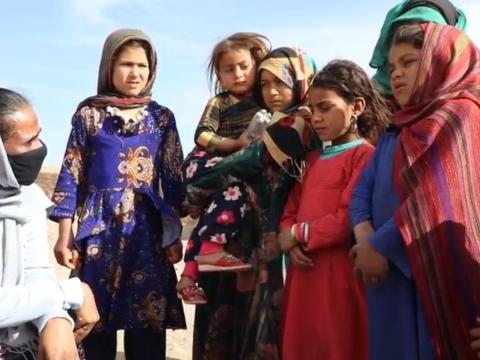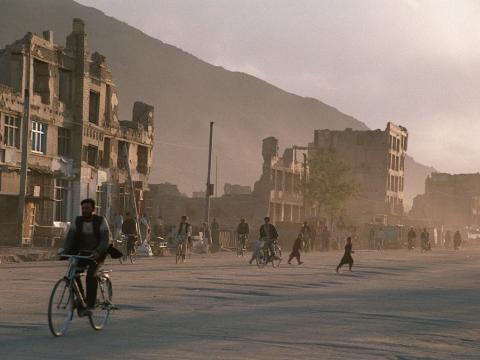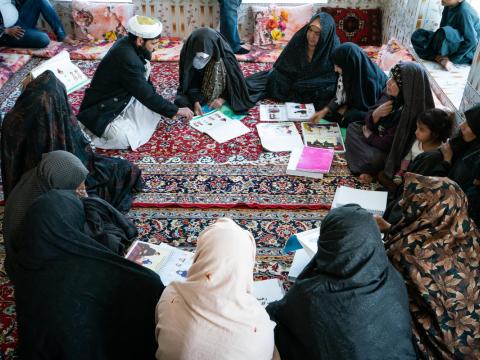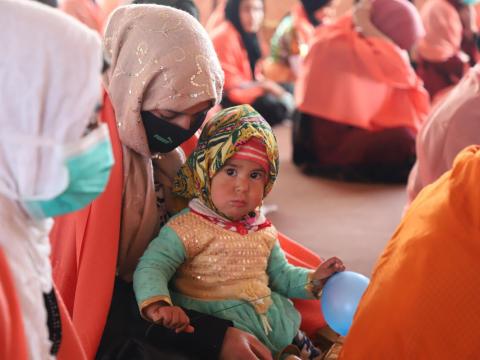
My heart breaks when children cannot get an education
Asuntha wonders whether the invisible in Afghanistan will speak up and bring change for the country's girls and their access to education.
By Asuntha Charles
Afghanistan is a nation filled with girls and boys bursting with young talent and a contagious enthusiasm for education, opportunities and the chance to do good in the world.
It seems silly to state this because why would it be otherwise? But sometimes we allow the TV images of conflict and chaos, and indeed even the urgent appeals for funding by the UN, and INGOs like mine, to colour our perceptions of what a nation and its children are like.
We might even underappreciate education ourselves because we live in a place where it is simply part of the fabric of our lives. We went to school, our children go to school and, dare I say it, we may even take schooling for granted? But when it comes to Afghanistan, one dollar spent on educating a girl or boy is a dollar very well spent.
I have lived in Afghanistan for nearly six years and I can tell you this is a nation where people are hungry for education. Even in this short time, I have witnessed fantastic progress. For decades, actually almost forever, girls (and boys) never even had the possibility of going to school or opening a child’s book or colouring in a cartoon drawing, let alone dreaming of becoming a doctor or a teacher. Schools did not exist. Boys served as shepherds. Girls served in the home. But in recent years there has been an explosion in access to education, even if by global standards far too many Afghan children still do not go to school.
As a South Asian myself, I know the value of getting an education. It is an escape route, actually about the only escape route, from poverty. People in places like Afghanistan– including children themselves – know this. It is why children in rural areas will go to school and then return home to do their homework by candlelight or lantern. It’s also why so many educated people are currently trying to leave Afghanistan because they are desperate to see their children, and especially their daughters, continue to get an education.
My heart breaks when I see children either denied an education or when simply there are no schools available for them to go to.
Until recently, in cities like Herat in western Afghanistan where I am based, or in the capital Kabul, the streets would fill every morning with the excited chatter of secondary school girls and boys walking to school with their backpacks crammed with text books and pens and pencils. Now the streets have a different tone, the voices of female secondary pupils are absent. Only primary-aged girls can attend primary school.
I am hopeful – I have to be – that the new authorities in charge will soon allow all girls at all levels to get back to school. They have suggested this will be the case, albeit with some adaptations to allow girls’ educations to conform to Sharia law and to guarantee their safety. In Kabul, universities are open to women, with segregation of the sexes in the classroom. Girls are in a wait-and-see mode and hoping that positive decisions from the new authorities will be made soon, especially since their brothers are back at secondary schools that had closed following the Taliban takeover.
With female workers also nervous about whether they can get back to work it is quickly becoming clear to all, simply by their absence, that women play a key role in the economy and in the provision of social, education and health services among other sectors. All of these professions require an educated workforce.
I suspect the country’s new leaders are uncertain about how to proceed. In 1994, Afghanistan ratified the UN Convention on the Rights of the Child committing the country to treating girls and boys equally. The convention is binding on subsequent governments and the international community is urging the new leaders to let it stand in practice.
But the ground truth is that Afghanistan is still a very divided country and there are different views on if and how, especially secondary school girls, should be educated. Questions around what blend of subjects should make up the curricula are now being considered, for both sexes. Sadly, it is still the reality that in some regions hardly any girls attend secondary school at all. Many marry young. On average, 17% of girls marry before their 15th birthday.
Urban centres are quite different from rural and more conservative areas and educational attendance rates are higher, for both boys and girls. In cities there are likely to be different expectations on what the curriculum should contain, and who should attend school.
Despite the differences over the last two decades there has been amazing progress in educating children. Much of this is due to the international community over the years contributing to as much as half of the country’s education budget. Twenty years ago, almost no girls went to primary school. Now four in every 10 girls do; equating to some 2.5m girls. Until recently, one million girls were in secondary education. Now they wait for the Taliban to decide whether they will deliver on their public statements regarding the rights of women and girls.
The aspirations of children for education are close to my and World Vision’s heart. During the past 20 years my agency has constructed more than 25 primary and secondary school buildings and renovated more that 100 schools in the provinces of Ghor and Herat, helping thousands get an education and putting them on a path to greater opportunities and economic security. We’ve continually advocated for the benefits of schooling with provincial leaders.
Many of those pupils looked up to women in teaching, in humanitarian and development agencies, in banking and business and elsewhere as forerunners to a world of burgeoning opportunity. I felt, as the female leader of an organisation with more than 300 staff, that somehow I could be an example to the Afghan women who worked with me. However, many have since confided that they feel nervous about the future and want to leave the country.
I am hoping that the evidence of what women have achieved so far, of the economic benefits of women being in the workplace and that even the influence of women in the home will be enough to move the hearts and minds of decision makers and push the thinking forwards.
The international community is united in asking for the Taliban leaders to give assurances to women and girls that their rights to work and learn will be protected. It has some leverage since over 42% of the country’s GDP comes from foreign aid.
But I also know that into this mix come questions of culture and faith and that there are those with deeply and genuinely held beliefs about the roles of women and men. This is common to all societies. Sometimes it takes courage to break with the past, and to listen to voices that may not have been heard before, as well as bravery among those who have been invisible and silent to speak up too. History has shown time and again that there are moments when the voices of the invisible – of minorities, of women, of slaves, of people of colour, are heard and change comes.
I wonder if this might be such a moment? I suspect there are many conversations happening in dusty rural compounds where women and girls are advocating with husbands, brothers, and fathers. Most of this will be invisible to outsiders. It takes me back to my own past. As a South Asian woman there were expectations on me to marry, to make a home in my home country, to have children and not to pursue an advanced education and a career. I have followed none of that. But I consider my life to have been blessed despite the hardships and I hope I have been a blessing. My family views my choices positively now. Today, I am independent because of my education and job. Now I hope and dream of creating the same thing for every Afghan child in this country.
I remember a conversation I had with Maliha, an eight-year-old girl who lived in a village where most girls do not go to school. She shared how she wanted girls and boys to be treated equally and how she desired to be a teacher herself in order to help other girls get educated. She told me with real determination that if she ever became President, she would ensure girls went to school and that schools were built for them. These are the kinds of dreams girls across the country have, but will they stay just dreams? These are the thoughts that keep me awake at night.
We owe it to all children to stand with them, to support them, and to help them see their dreams fulfilled.
By Asuntha Charles is the National Director of World Vision Afghanistan
_______________________________
[1] https://www.unicef.org/afghanistan/education
[2] https://www.cgdev.org/blog/girls-education-casualty-disastrous-withdrawal-afghanistan
[3] https://en.unesco.org/sites/default/files/afghanistan_v11.pdf, page 28


